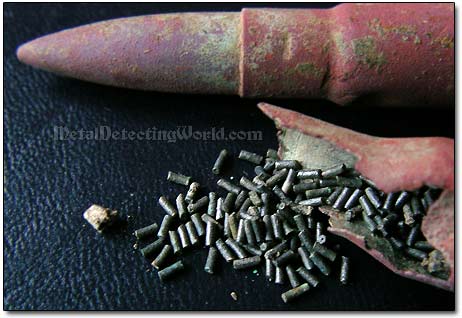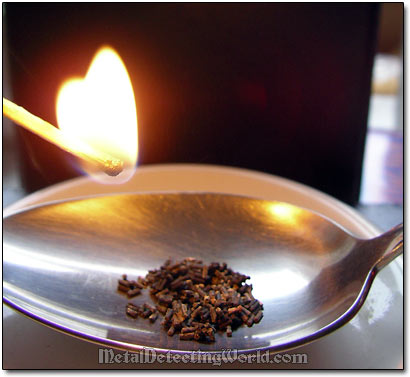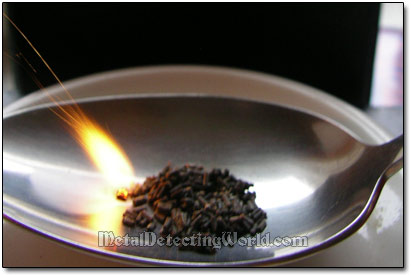Part I - Metal Detecting WW2 Relics at Tavern Site, page 35
Testing Deadly Capacity of WW2 Gunpowder
I discovered the gunpowder inside the brass casing when I tried to take the dirt out of it. It was impossible to tell what happened to the bullet, whether it was purposefully broken off by a soldier or the gun's malfunction caused it to break off. In any case, the gunpowder did not spill out, and enough dirt had got inside to securely plug it. I assumed that the gunpowder had to be exposed, at least partially, to the moisture and soil elements over six decades of being buried underground - would this have a negative effect on the gunpowder's ability to explode?
I decided to test the gunpowder not for fun, but to prove that the unfired and unexploded WW2 ordnance, propelled grenades, mines and ammunition cartridges, after having been underground since the end of the World War II, still present a great danger to those who tamper with them, deal with them with negligence or just do not take them seriously while metal detecting.
Tiny Cylinders of Gunpowder Spilled Out of Broken Brass Casing

NOTE: Do NOT do this at home!
After letting the gunpowder dry up for a while, I placed a small amount of it - approximately 1/4 of all gunpowder contained in a cartridge, in a table spoon bowl for burning. I positioned a table spoon on a large metallic bowl lying upside down in front of my camera.

When I ignited the gunpowder with a match, a few cylinders caught the flame reluctantly and just hissed spitting a few sparks out. I thought, "Oh well, the gunpowder had lost its might..."
